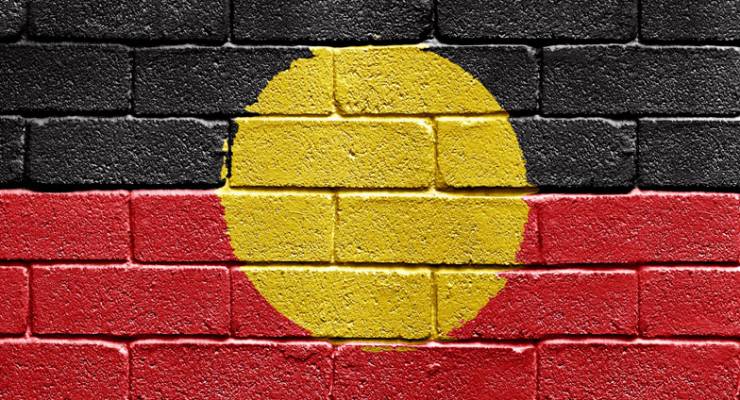
Since writing about Andrew Bolt’s odyssey through the minefield of indigenous recognition, I’ve learned that almost nobody actually watched Recognition: Yes or No? It makes further review of the program a bit pointless, but there is more to say on the subject that it sought to seriously address and which most of the population finds deeply uninteresting.
This indifference — which doesn’t even rise to the level of ambivalence — is a massive challenge, but it’s also kind of the point in itself. Did you know that the deeply racist provisions of the Australian constitution weren’t even directed at indigenous Australians? In the extensive Constitutional Conventions of the 1890s, when the constitution was negotiated in breathtaking detail, Aborigines were barely ever mentioned and Torres Strait Islanders not at all.
At our birth as a nation, the indigenous people were not part of the conversation. They weren’t invited, of course, but they also had a lesser presence in the consciousness of the constitutional drafters than issues such as the differences in rail gauges between the states.
The constitution, as it emerged in 1901, didn’t entirely forget indigenous Australians; it gave them two mentions, both by exclusion.
What did animate the delegates, and resulted in very specific race-based provisions being included in, or rather excluded from, the constitution? Section 127 excluded “aboriginal natives” from being counted in the census. Nobody at the time explained this on the basis that they were considered subhuman; it was designed as a political compromise to prevent Queensland and Western Australia getting extra representation in federal Parliament by virtue of their large indigenous populations.
Of course, that is the same as saying that Aborigines are subhuman, which is what pretty much every white person assumed at the time.
[Why Andrew Bolt has a place on ABC TV: recognition doco executive producer]
The other constitutional recognition of indigenous existence was in the original form of section 51(xxvi), the “race” power. This gave the Commonwealth Parliament the power to make laws with respect to “the people of any race, other than the aboriginal race in any state, for whom it is deemed necessary to make special laws”.
It was some pretty special drafting, managing to embed two layers of racism in one phrase. Again, the debate that led to this wording had nothing to do with indigenous people; it was entirely focused on keeping things white by excluding or controlling coloured races from elsewhere. It was accepted with mild irritation that we already had some dark people here, but they were not the issue. The overriding concern was that expressed by our first prime minister Edmund Barton:
“There is no racial equality … the doctrine of equality of man was never intended to apply to the equality of the Englishman and the Chinaman.”
Again, the passing mention of “aborigines” was a political issue; the states insisted on retaining their power to deal with their resident indigenous populations as they wished, without federal interference (and my, didn’t that go well).
The breathtaking degree of racism that underpinned our foundation was declared by Alfred Deakin — principal architect of the constitution, first Commonwealth attorney-general and three times prime minister — in 1901:
“Little more than a hundred years ago Australia was a Dark Continent in every sense of the term. There was not a white man within its borders. In another century the probability is that Australia will be a White Continent with not a black or even a dark skin amongst its inhabitants. The aboriginal race has died out in the South and is dying fast in the North and West even where most gently treated. Other races are to be excluded by legislation if they are tinted to any degree.”
OK, so Deakin is off my Fantasy Dinner Party guest list but, yes, everyone was racist back then. It is, however, important to recognise that, when our country began, the sole recognition we gave the previous owners of the land on which it exists was that they wouldn’t be around much longer and the states should not be interrupted in their unfinished work of ensuring that outcome. Our racial anxieties were projected elsewhere, to the overseas sources of a future swamping.
That level of legalised racism was so appalling, it only lasted another 66 years. Eventually, the 1967 referendum passed with a 90.1% “yes” vote, amending the constitution to delete section 127 altogether and remove the reference to “the aboriginal race” from s51(xxvi).
What’s left is the rest of s51(xxvi), which is still race-based. And section 25, which was never directed at indigenous people specifically, but is generically outrageous: it contemplates that the states can make laws disqualifying people from voting in their elections on the basis of their race.
Section 25 has to go; nobody is openly arguing against that.
The fascinating dilemma arises when we come to a repeal of s51(xxvi), which is advocated by both progressives and Boltives. Their argument is essentially identical: our constitution should not contain a race-based law. So far, so agreeable, until we contemplate some of the non-evil uses to which the race power has been put: most potently, native title.
[Andrew Bolt’s big honking errors on indigenous recognition]
The problem is that the Commonwealth Parliament’s powers are only those given to it by the constitution; all other law-making power belongs to the states. If s51(xxvi) didn’t exist, the Commonwealth could not have passed the laws that gave indigenous Australians land rights. It would not only be prevented from discriminating against indigenous people or other racial groups; it could not make laws to benefit them either.
Bolt makes a fair point here: why would we take all the race-based provisions out of the constitution, only to put one back in? Because that’s the only way to ensure that laws which specifically recognise and benefit indigenous Australians, such as native title, can continue to be made at national level.
The horn of this dilemma is Bolt’s central thesis: constitutional recognition of indigenous people is no less racist than was the original act of treating them like animals.
Oh, actually, when I put it that way … we did treat them like animals, didn’t we? There’s not a lot of moral or legal equivalence there. If pre-colonisation Australia had been terra nullius like everyone pretended before Mabo, then there’d be no argument; a constitution recognising nobody other than all of us in equal terms would be the perfect ornament to our nationhood.
The reality is bloodier. Indigenous Australians were dispossessed of their land, never compensated and, for the longest time, ignored. If Australia was settled by the gun, the Constitution was founded on the graves of unrecognised Australians. It has to be amended in a sophisticated way, achieving dual ends: to remove the original racism which still stains the document; and to address the more profound racism which only indigenous Australians ever felt, so deep that their very existence was treated as a temporary nuisance.
Australia, racist? It’s in our bones.








Nice article Michael. I would like to say that the constitution was written based on the invasion of their land and the massacre of their people. To some there is still an undeclared war. What white invaders did is akin to Isis invading Syria and Iraq and declaring a caliphate. Not only that but white man sent his trash to colonise and with that disease, drugs, firearms and no compassion. In my reality the constitution is founded on immoral and illegal grounds.
So I am the descendant of trash?
Well said Michael.
White Australia was founded on a double-barrelled, self-contradictory lump of racism. “There’s nobody here, and they’re going to die out anyway”
These Bourke High School kids have got a message for Andrew Bolt and all Australians: “People of the Red Sunset” by the B-Town Warriors. Check the You Tube.
Many other countries were colonised under similar conditions to Australia. What do they do about constitutional recognition? Comparisons with e.g. Canada, USA, maybe Argentina would be interesting.